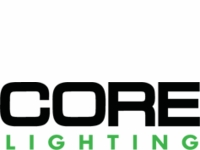Lighting Fixtures, Lamps, and Luminaires
DMX Lighting

For the ultimate in lighting design and control, there is no match to the flexibility provided by a DMX system. DMX-compatible light fixtures are designed to be compatible with the USITT standard DMX 512 lighting protocol in order to integrate into your existing lighting system (if you have one), or we can design a brand new DMX control system from the ground up. The end result is simple: to give you absolutely stunning lighting results with unsurpassed precision and control.
DMX systems can be very complicated, and it's important to us that you are happy with the end result. So remember, whether you have your own DMX board/software or choose to use one of ours, be sure to...
ALWAYS CONSULT A LOCAL QUALIFIED LIGHTING DESIGNER OR TECHNICIAN FOR PROPER INSTALLATION AND INTEGRATION OF YOUR DMX SYSTEM.

Get a Custom Quote for DMX Lighting
Contact us today and let us assemble a custom quote for DMX lights and a complete DMX system tailored to your project.A wide variety of indoor and outdoor LED lighting fixtures are compatible with DMX controls including tape lights, flexible neon, modules, cove lights, wall washers, floot/spot lights, downlights, architectural troffers, interior linear lighting, and more.

Terminology
DMX512 (also called simply DMX) is a communications protocol standard used to control lighting, effects, and other intelligent fixtures. The foundation of the DMX512 protocol as a professional communications standard allows a variety of fixture types to be controlled by a single controller, regardless of manufacturer."DMX" stands for "Digital Multiplex", while the "512" refers to the number of control channels that can be used on one network, called a "universe".
A Universe
DMX universes are connected in a daisy-chain fashion. There is a single "master" for each universe, usually the DMX512 controller, followed by a series of one or more "slave" devices, such as lights, dimmers, fog machines, intelligent moving lights, etc. The controller will have a DMX OUT port to start the universe, then each fixture will have a DMX IN and a DMX OUT connection port on it to link it to the universe. Specially-made DMX cables, typically with XLR3 or XLR5 connectors, are required when linking together devices in a DMX network. The last slave device in the DMX512 universe shall have a DMX terminator plugged into its empty DMX OUT connection in order to properly terminate the signal.Applications
DMX systems have near limitless applications. Often used by professionals for stage lighting and effects, DJs, and nightclub owners, DMX systems are now also being used in architectural lighting. A DMX system is very powerful and can provide you an unprecedented level of precision and control over your lighting. With our RGB fixtures, for example, you can use DMX control software to fine tune the mixture of red, green, and blue light to exactly match a specific PANTONE color. (Such as your business's official corporate colors.)Get An Expert
With such precision and control comes a good deal of complexity. DMX systems can run the gamut of being quite simple and controlling one or two light fixture in a small space to being enormously complex and controlling hundreds of different devices over great distances. The capabilities of what you can do with a DMX system are unending, which can be very exciting, and a little overwhelming.We always recommend consulting with a qualified, local lighting technician who is familiar with DMX implementations to act as your DMX expert and assist you in determining all the components you will need and proper installation procedures, in order to get the most out of your DMX system.
 Cart
Cart












